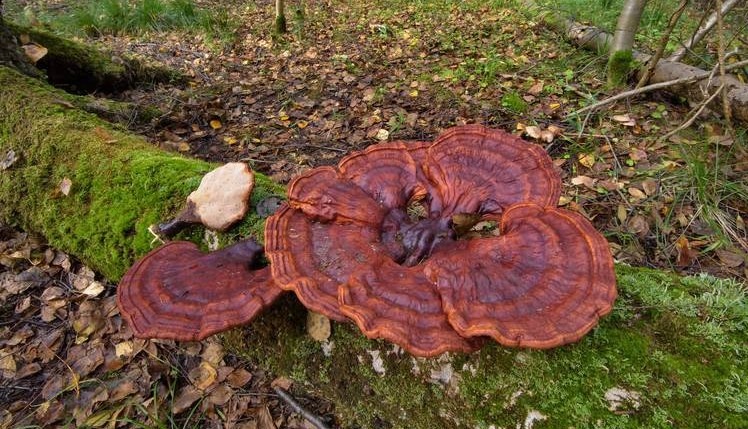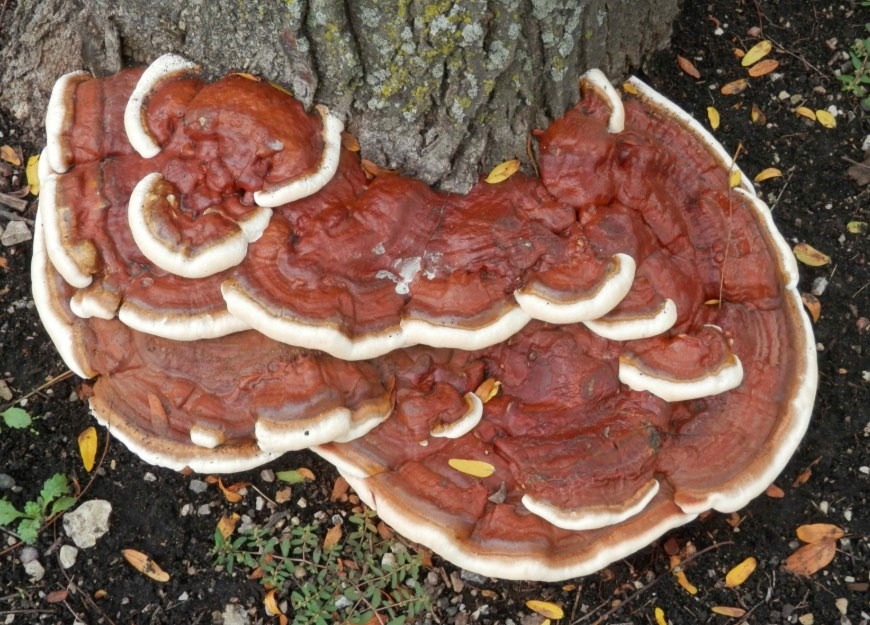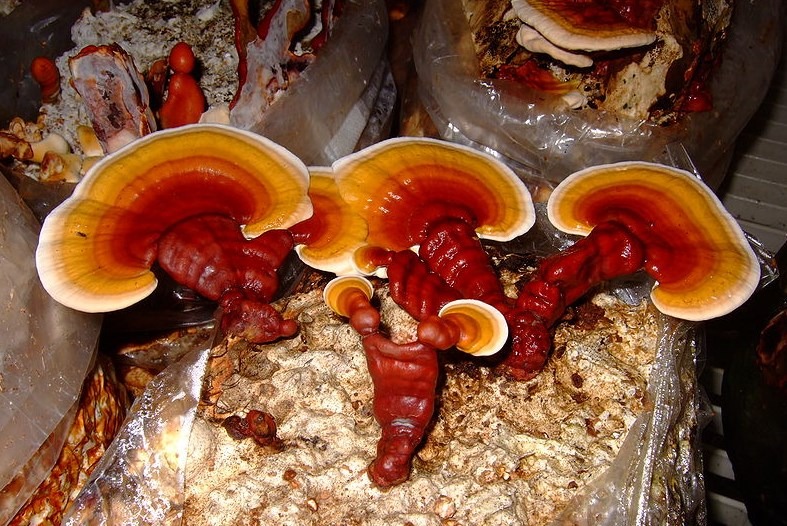The Ganoderma Lucidum mushroom is the only mushroom in the Ganodermaceae family to have a stipe. Also commonly called Lingzhi Mushroom and Reishi, it differs from its congeners because of this characteristic.
The Reishi mushroom is known mainly in eastern countries as the “mushroom of immortality” or “ling zhi mushroom“. In fact, this species has been used for thousands of years in traditional Chinese medicine as a natural remedy for certain types of diseases.

Description of Ganoderma Lucidum
The Lingzhi Mushroom is a parasite mushroom but also saprophyte. The hat of the Ganoderma lucidum is almost ovoid in shape and flat. It is very thick and also very woody. Its surface is wavy and irregular, however it is smooth and very shiny. Visually, the entire surface of the Ganoderma lucidum hat is divided into multiple growth rings.
Rings
Each ring on the top of the cap of the Reishi mushroom is concentric and has a varied shade.
Stipe
The stipe of the Lingzhi Mushroom is also sometimes inserted into the cap in a lateral position. The stem is long and cylindrical, also very consistent and with an irregular silhouette.
Pores
The pores are tiny and rounded.
Flesh
The flesh is tasteless odorless and very leathery.

Variability of the Ganoderma Lucidum
The colouring of the Ganoderma lucidum hat presents significant chromatic variations: it can vary from reddish to black, passing through a purplish-brown colour and yellowish shades.
His consistency can be first spongy and then woody. The stem may also vary in length. Sometimes it is only sketched, sometimes very long.
An interesting and distinctive feature is that the stipe has the colour of the cap. On the contrary, the pores under the cap are whitish in the young specimens and then become yellow and brown in the ripe ones. Also the tubules are first white and finally yellow.
Habitat of Lingzhi mushroom
The Ganoderma Lucidum can be found from the plain to the mountain at almost all altitudes. It rarely grows in coniferous forests as well as on rotten wood roots and stumps. It prefers deciduous forests, especially oaks and chestnut trees.
During its development and growth, it incorporates into its cap everything that surrounds it, such as blades of grass, leaves, pieces of wood and copper. The growth period is extended to the whole year.

Curiosities about Ganoderma Lucidum
The Ganoderma Lucidum is not edible. However, as mentioned in a previous paragraph, this type of fungus and this species in particular is known in China for its medicinal therapeutic properties.
It would contain some active ingredients capable of regulating blood sugar and cholesterol. Other properties seem to have a positive effect on cardiac arrhythmias.
For all these therapeutic purposes, however, a dried powder obtained from the mushroom is used and not the raw or cooked mushroom, which is not edible.
The mushroom The fungus is highly valued in traditional Chinese medicine as it is considered one of the most powerful adaptogens that are present in nature.
Its intake produces a significant increase in the body’s resistance to both physical and mental stress as well as external pathologies. It would therefore be healthy for the efficiency of the entire body since it contains hundreds of bioactive substances with multiple healing properties.
In order to use the fungus for therapeutic purposes or to try to dry it, we recommend that you consult a specialist in this field as we could not find or verify the information as this practice is mostly unknown in Europe. The fact remains that this is a non-edible mushroom.
IDENTITY CARD
CAP COLOR: reddish
STIPE HEIGHT: 5-25 cm
PORES: ochre
FLESH: ochreous
SMELL: smell
TASTE: tasteless
SPORES: brunettes
HABITAT: Hardwoods
Did you find what you were looking for? See also here: